Object Record
Images
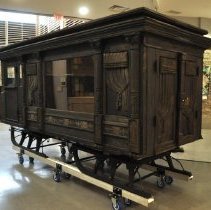
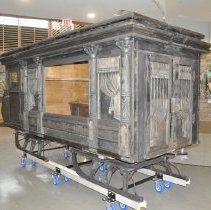
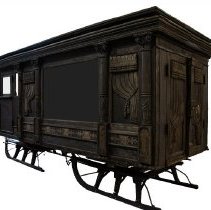
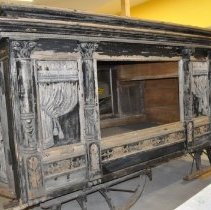
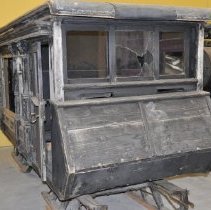

Additional Images [59]
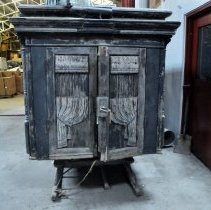
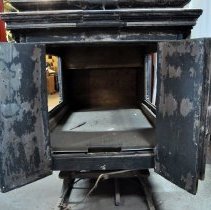
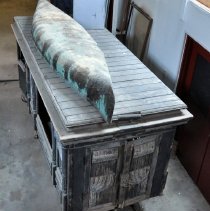

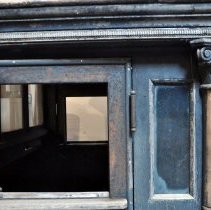
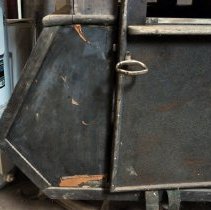
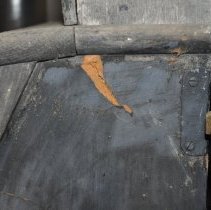
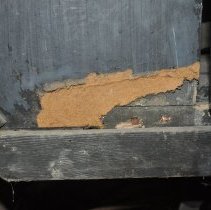
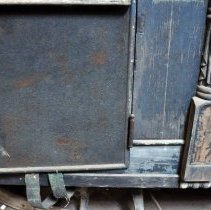
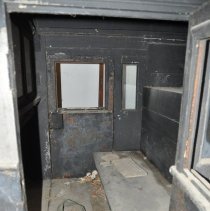
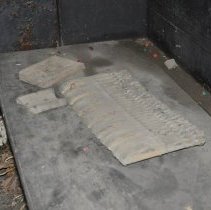
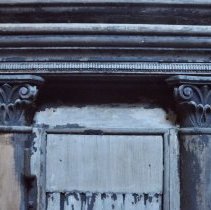
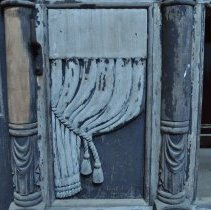
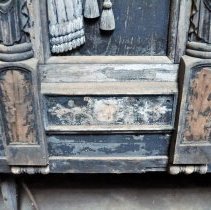
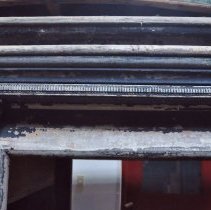


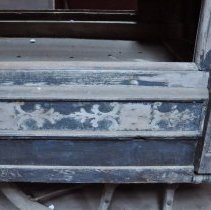
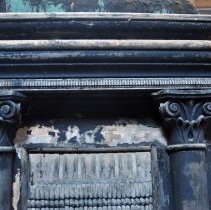
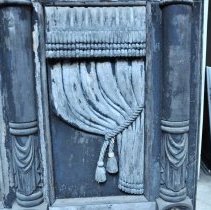

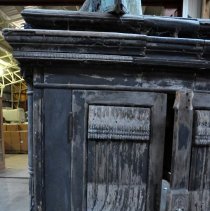
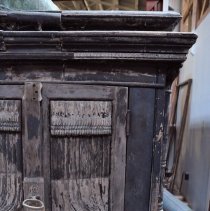
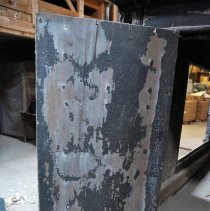

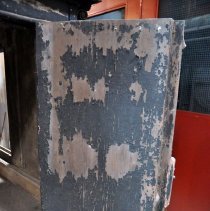
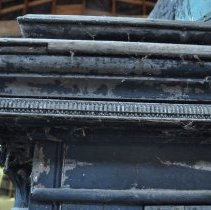
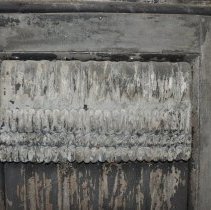
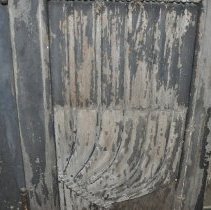
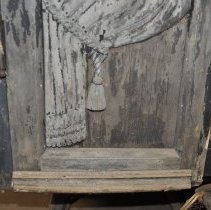
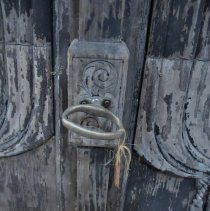
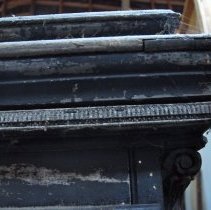
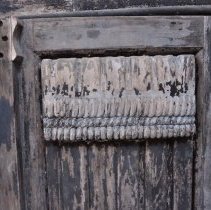
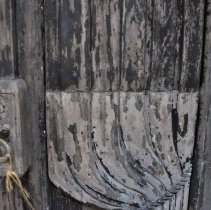
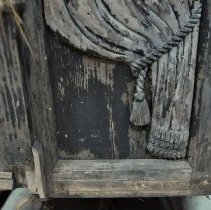
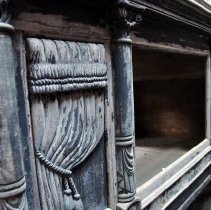

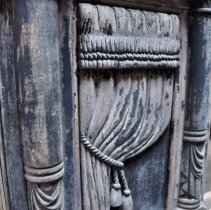
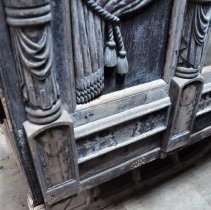
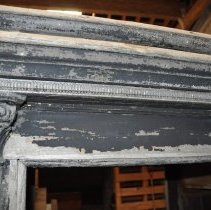
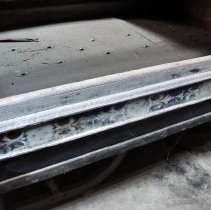
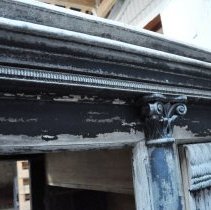
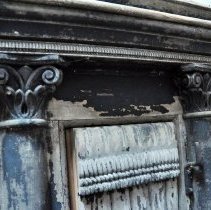
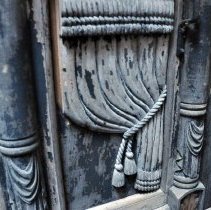
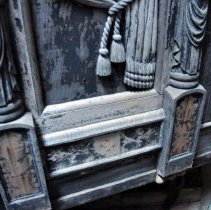
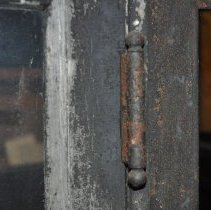
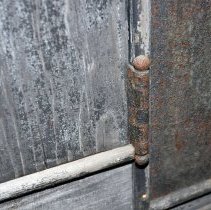
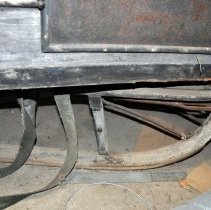
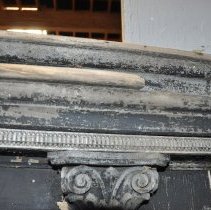
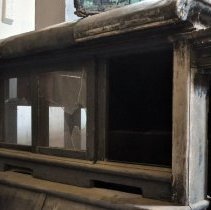
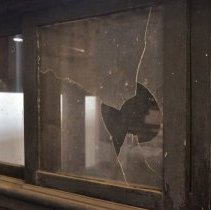
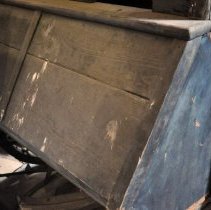
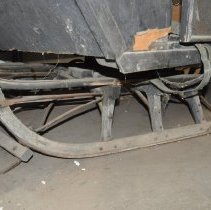
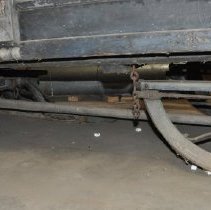
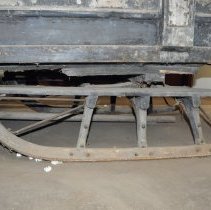
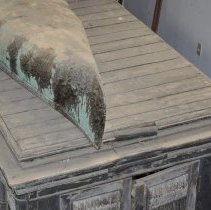
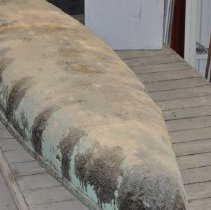


Metadata
Object ID # |
2006.027.001ab |
Object Name |
Hearse, Horse-Drawn |
Other Name |
Hearse, Winterized |
Title |
Horse-Drawn Winter Hearse |
Lexicon category |
7: Distribution & Transportation Artifact |
Date |
1937-1939 |
Year Range from |
1937 |
Year Range to |
1939 |
Artist |
Noble, Ralph |
Made |
Unknown/Noble, Ralph?/James Cowan & Co. |
Place of Origin |
Shallow Lake, Township of Gerogian Bluffs, Grey County |
Description |
Horse-drawn winter hearse (a) mounted on sleigh runners and hitching pole (b). It has been painted black. It has carved wooden columns, wooden "window curtains", and decorative wooden appliqués. There are two metal back doors whose hinges have ball-like knob ends and are 12 cm long. There is a vertical bracket for a carriage lamp, though the hearse no longer has one. Rear window is made of rectangular glass, with a plain moulded frame measuring 37 cm x 14 cm. No maker's identification was observed on the exterior. The back sleigh runners each have 3 knees which tenon into the runners. The runners also have iron shoes on them. There is a detached wooden applique piece sitting inside the cab. There are chains attached to the back runners. The interior is made of plywood, a 28.5 cm wide metal roller, and multiple smaller rollers. There is an unsprung metal "spring" at the back under the right door. There are 82 cm between the back runners and the iron brackets are secured with square nuts. The top of the hearse is flat, slatted and shaped. There are round nail heads visible at the top. The front driver's area has sliding windows with plain glass and plain frames. |
Makers mark |
Need to look at its interior yet to see if there is a name on it anywhere. |
Provenance |
The hearse was reportedly custom-made in Shallow Lake (by Ralph Noble, Blacksmith?) in the late 1930s for William Watson of Priceville, a local undertaker and harness-maker. The hitching pole has a maker's mark on it found by the Canadian Conservation Institute with infrared camera (not visible otherwise) of James Cowan & Co., London, Ontario. The hearse was driven from 1937 up until 1952 by Tommy Currie (source: Tommy Currie's daughter, Mary Fowler) who recorded his memories of the vehicle in an interview for the South Grey Museum (recorded by Margaret Turney in 1993). Mary Fowler says that her father "did not like driving the hearse with the [horse] team as it was always enclosed and there were only holes in the front for the reins and it was very difficult to see." Tommy Currie's oral history: The hearse was a horse-drawn sleigh, used exclusively in winter. Bereaved customers would turn up at Watson's pick out a casket for their dear departed and Watson would call Currie. Loading the empty casket onto the hearse, along with materials needed for laying out the body, plus chairs and other items required for the funeral, Currie would hitch up the team. He says he had three teams: two teams of bay horses and one team of black horses. The blacks would usually be used for the funeral itself, but for this first trip out he'd usually use one of the bay teams. On reaching the farm where the death had taken place, Watson and Currie would prepare the body before placing it in the casket, doing all the usual things like, washing the body, shaving the men, fixing the women's hair, and dressing the body in clean clothes. When asked whether family members helped with this Currie was emphatic. "No!" he says, " They were usually on the other side of a closed door." Currie also admits that depending on how long the person had been bed-ridden, coupled with the fresh air in the house and the degree of personal care that the patient had enjoyed, laying out the body could sometimes by an unpleasant and odorous task. After transferring the body to the casket and loading pails of cleaning materials back in the hearse Currie and Watson would return to Priceville. On its second trip, the hearse transported the casket with the body to the funeral site - be it a church or back to the home farm for burial there - often carrying the pallbearers as well. Currie has many tales of storms and blocked roads. Of motors - as he called cars or automobiles - as well as other teams falling by the wayside, when the roads became impassable. He was proud of his teams and took pleasure in his driving ability, in spite of day-trips which turned into night-trips, and driving in the dark with the horses slipping into holes in the snow, crowding one another, and moving along the road in zero visibility. In one story Tommy describes a drifted road so bad that one of the horses was walking several feet higher than the other; the hearse was slanted at a perilous pitch and all on board moved to the high side to balance the (casket) load. In spite of the bad weather Currie was forced to insist the pall bearers get off entirely and walk the rest of the way to the church. Often a horse-drawn sleigh hearse had removable runners and could be transformed into a summer vehicle with the addition of wheels; however, this hearse was kept just for winter driving. Watson is said to have had a 1928 Hupmobile hearse as well as a 1932 Buick nine-passenger car to use in summer. According to the book Priceville: Its Roots/Routes gas pumps began to spring up in Priceville in the late 1920s, but the main roads only began to be plowed for wheeled vehicles in 1943. It wasn't until 1950 that the majority of winter roads were cleared of snow. Apparently mail carriers still used horses both summer and winter until the mid-1940s. Tom Currie believed he was the only person to drive this sleigh hearse until it stopped in 1952. In the 1960s the Watson Funeral Home and its contents were sold to Elizabeth Craft & Roland "Rolly" Craft (at this time the hearse was in "immaculate condition" (see Notes and 1964 photograph in Multimedia)). The new owners sold the hearse in the 1960s (likely after 1964) to -----------------. 1964 to 1980s provenance is unknown. The hearse found its way to Grey Highland's South Grey Museum in Flesherton when Gil MacNeill, who had acquired it in the 1980s (auction?) and was preserving the hearse in his barn, was looking for a way to give it more public view. When his original idea to place it in the McNeil Cemetery fell through he offered it to South Grey Museum. It eventually became an item in the collection of the South Grey Museum & Historical Library, but as there was no display/storage space large enough to house it, the item was transferred to the Grey Roots Museum in 2006. On December 17, 2015, it was transported / shipped to the Canadian Conservation Institute in Ottawa for an extensive conservation and stabilization treatment (see 2023 condition report). Due to the Covid-19 pandemic and the impact on staffing levels at CCI, the treatment took until the spring of 2023 to complete. |
Collection |
Transportation, Land: Animal-Powered |
Material |
Wood/Glass/Paint/Metal |
Dimensions |
H-71 W-58.5 L-144 inches |
Found |
Flesherton, Municipality of Grey Highlands, Grey County |
People |
Watson, William Watson, William George Sutherland (Rev.), Angus Currie, Thomas (Tommy) Noble, Ralph |
Subjects |
Funeral processions Funerary Object Funeral rites & ceremonies Vehicles Death & burial Death Hearses |
Search Terms |
Artemesia Township Priceville McNeil Cemetery |
Function |
Researched history suggests that it never was "summerized" as some hearses were. The hearse would be drawn by two horses. There are chains attached to the back runners (for traction safety) |

